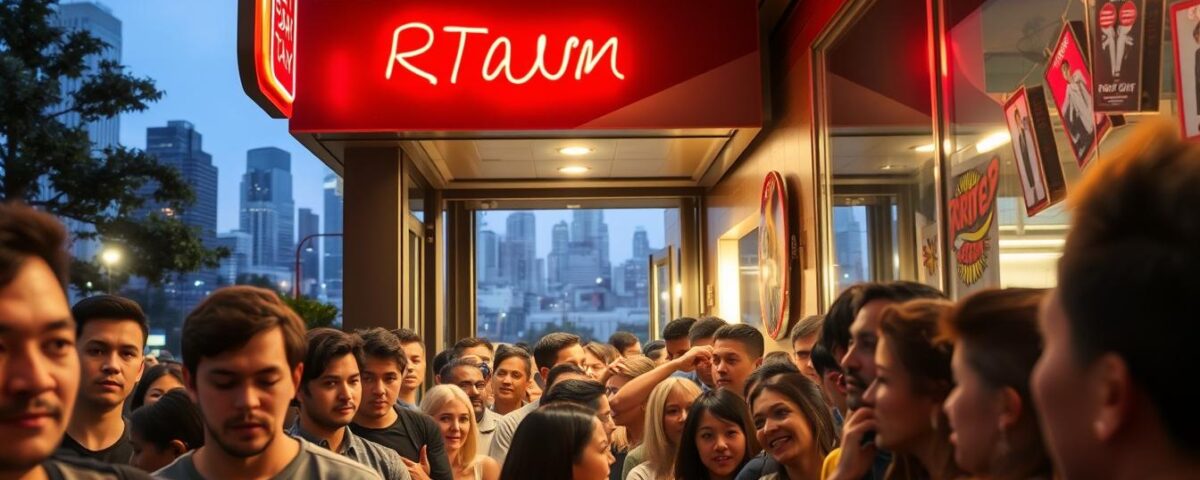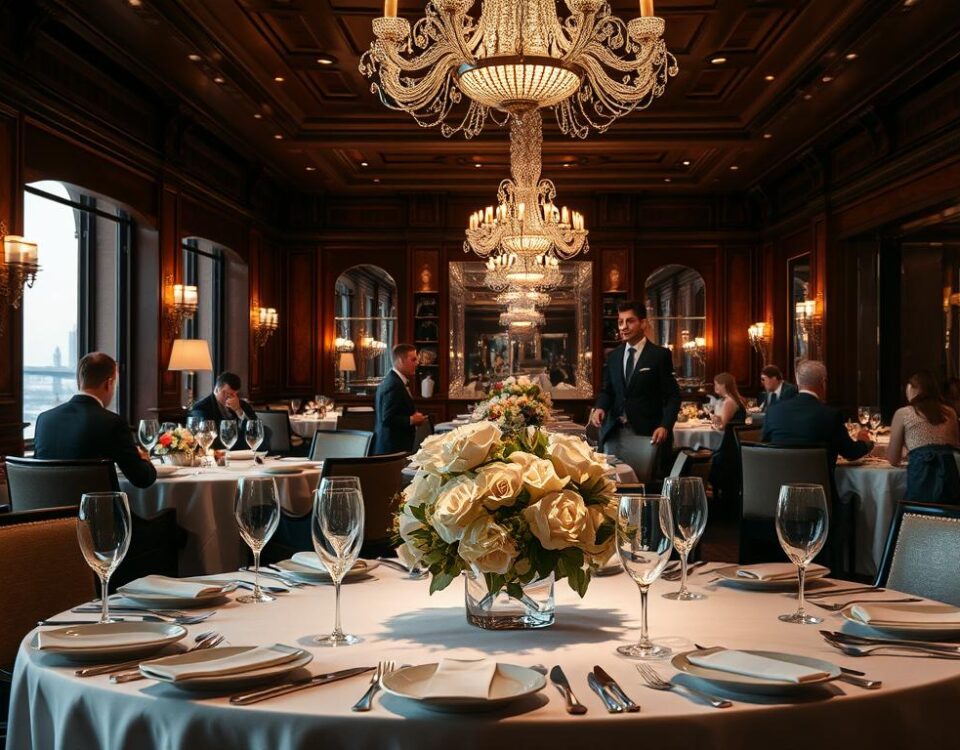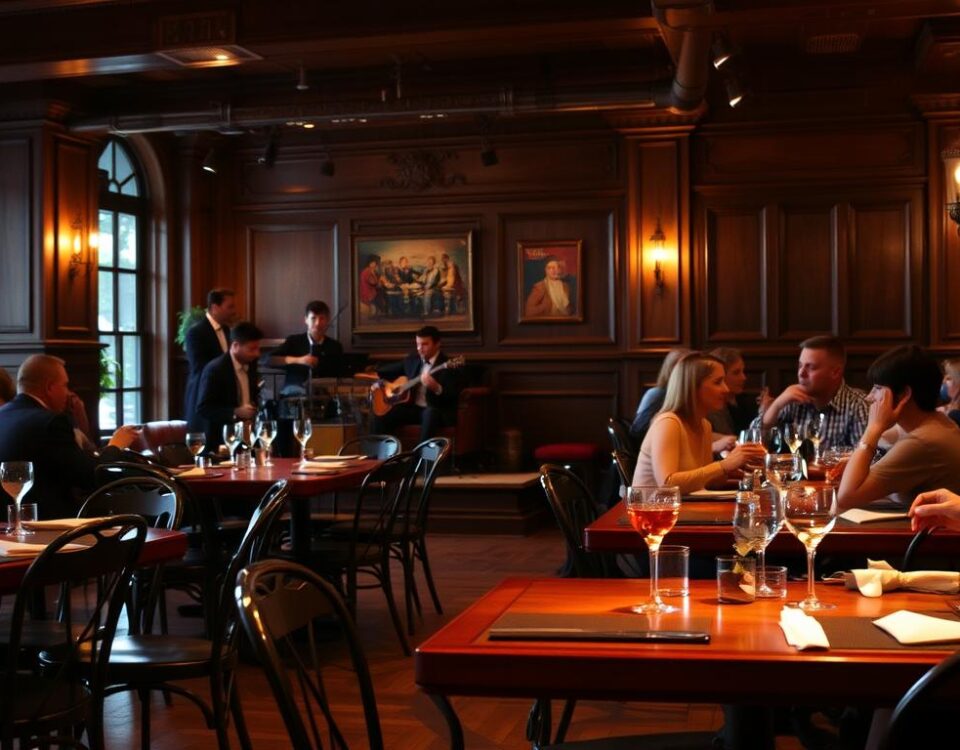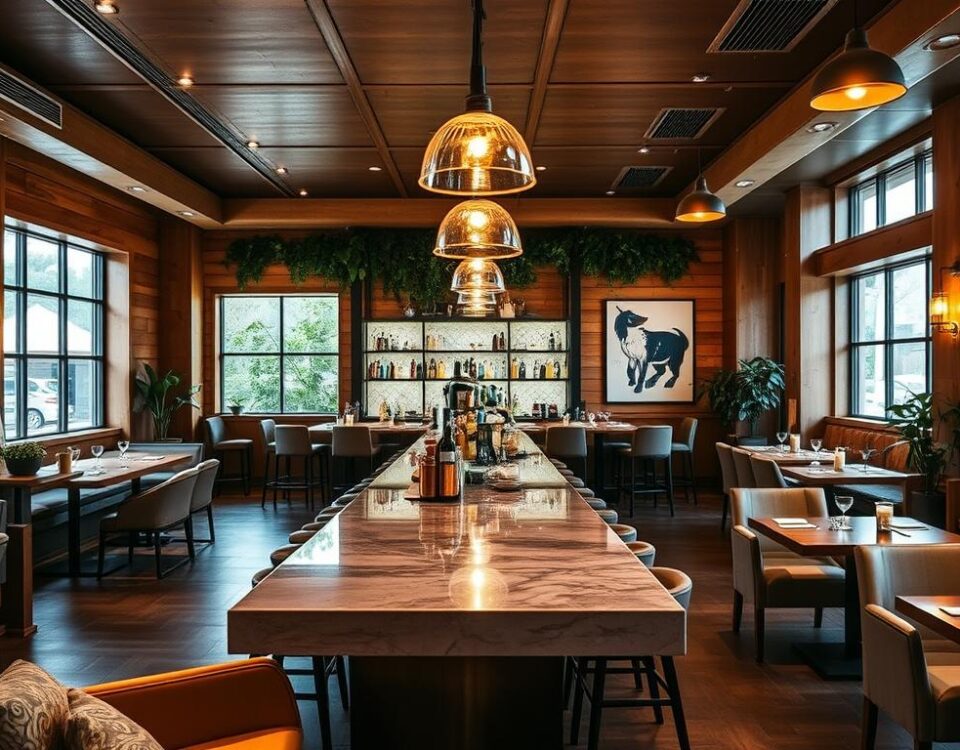
Why Customers Trust Certain Restaurants Instantly and How to Build Credibility
October 30, 2025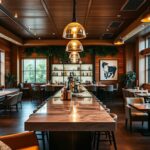
How to Design a Restaurant Experience That Gets 5-Star Reviews and Repeat Visits
October 31, 2025I still remember walking into a bustling restaurant on a Friday night, the aroma of freshly cooked food filling the air, and the hum of conversation creating an atmosphere of excitement. It was clear that this place was popular, and I wanted to be a part of it.
Did you know that a study found that people are more likely to choose a restaurant that appears busy, even if it means waiting? This phenomenon is rooted in restaurant line psychology, which can be a game-changer for business owners looking to attract more customers.
By understanding how to create an impression of popularity, you can increase your customer base and drive sales. So, how can you make your restaurant appear more appealing to potential customers?
Key Takeaways
- Understand how restaurant line psychology can transform your business.
- Learn why customers are drawn to busy establishments.
- Discover strategies to create an atmosphere of exclusivity.
- Find out how to balance buzz with customer satisfaction.
- Explore the power of social proof in decision-making.
The Power of Perceived Popularity
Restaurants that are perceived as popular often enjoy a significant advantage in attracting new customers. This phenomenon is rooted in the psychology of how people make dining decisions.
Why People Are Attracted to Busy Restaurants
According to psychology, individuals are drawn to busy restaurants because they trust the judgment of others. This trust is a form of social proof, where the presence of other customers creates a sense of quality and exclusivity. People instinctively believe that if others are willing to wait, the food and experience must be worth it.
The Social Proof Phenomenon
The social proof phenomenon is a powerful marketing tool. It creates asense of popularitythat attracts more customers. By leveraging this psychological principle, restaurants can create a bustling atmosphere that draws in new patrons. This, in turn, reinforces the perception that the restaurant is a desirable dining destination.
Understanding Restaurant Line Psychology
Understanding the psychology behind restaurant lines is crucial for creating a positive dining experience. When customers wait in line, their perception of the wait time can significantly impact their overall satisfaction.
The Psychology Behind Waiting
Research indicates that customers perceive a wait time as longer when they have nothing to do. This is because the absence of engagement or stimulation makes the wait feel tedious. To mitigate this, restaurants can create an engaging atmosphere while customers wait.
For instance, providing entertainment, such as TVs or live music, can distract customers from the wait. Additionally, offering refreshments or having an open kitchen can make the wait feel more enjoyable.
How Customers Perceive Wait Times
Customers’ perception of wait times is influenced by their environment, engagement, and expectations. When customers are engaged, such as by being able to see the kitchen or having something to read, the wait feels shorter.
- The environment plays a crucial role in shaping customers’ perceptions of wait times.
- Engagement strategies, such as interactive displays or entertainment, can reduce the perceived wait time.
- Clear communication about wait times and expectations can also manage customers’ perceptions.
The Paradox of Popularity and Impatience
There’s a paradox in how patrons are simultaneously attracted to popular restaurants yet frustrated by long wait times. This paradox highlights the need for restaurants to balance popularity with customer satisfaction.
Customers feel disrespected when they think their time is wasted unnecessarily. Therefore, it’s essential for restaurants to manage wait times effectively and provide a positive experience.
By understanding the psychology behind waiting and how customers perceive wait times, restaurants can create a more positive experience for their patrons. This involves managing the wait line effectively and creating an engaging atmosphere.
Creating the Perfect Waiting Experience
A well-designed waiting area can transform a potentially negative experience into a positive one. By incorporating elements that distract, comfort, and engage customers, restaurants can turn wait time into a valuable part of the overall dining experience.
Designing Comfortable Waiting Areas
Comfortable seating, ambient decor, and engaging activities can make a significant difference in how customers perceive their wait. Providing amenities like free Wi-Fi or complimentary refreshments can also enhance the waiting experience.
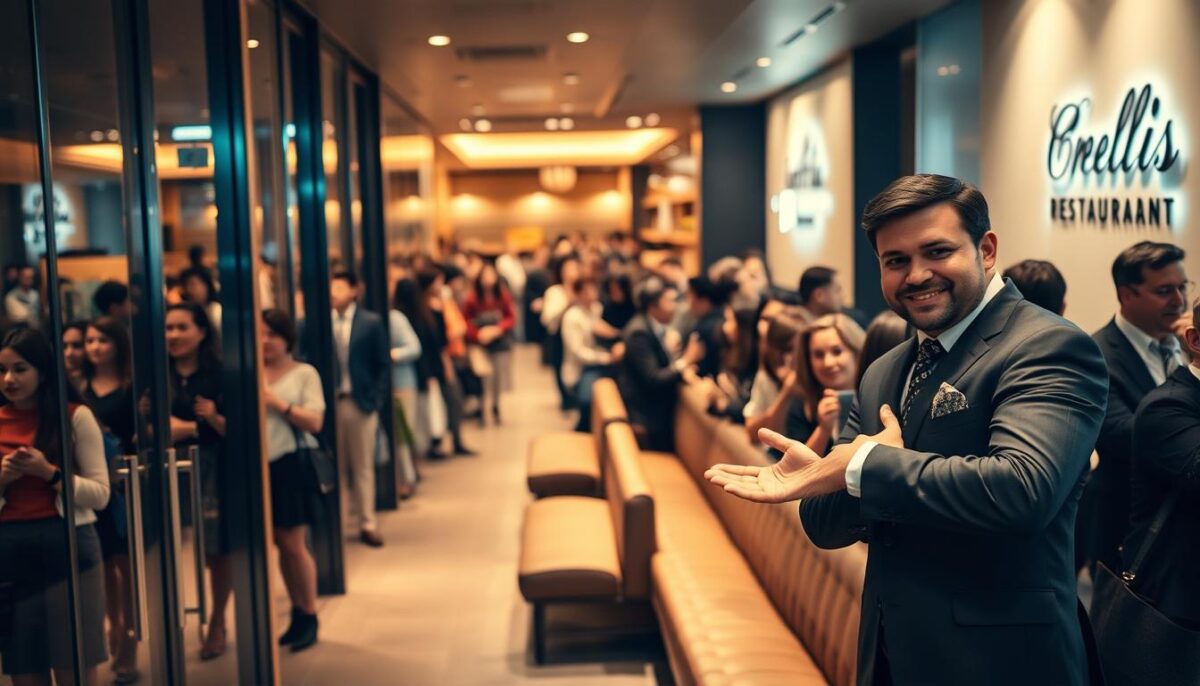
Managing Customer Expectations
Managing customer expectations is crucial in reducing frustration and increasing satisfaction. Providing an estimated wait time and then beating it can make customers feel like the staff are focused on helping them.
Turning Wait Time into Experience Time
To turn wait time into experience time, restaurants can offer distractions in the form of entertainment or activities. This can help occupy customers and make the wait more enjoyable.
| Waiting Area Elements | Benefits |
|---|---|
| Comfortable Seating | Reduces customer discomfort |
| Engaging Activities | Distracts customers from wait |
| Complimentary Refreshments | Makes customers feel valued |
By implementing these strategies, restaurants can create a positive waiting experience that enhances customer satisfaction and encourages repeat visits.
Strategic Table Management to Create Buzz
By optimizing your table management, you can create a sense of high demand and attract more patrons to your restaurant. This involves implementing strategic seating arrangements that not only enhance the dining experience but also contribute to the perceived popularity of your establishment.
Seating Strategies That Create Perceived Demand
One effective way to create perceived demand is by utilizing window seats strategically. By placing diners near windows, you can showcase your restaurant’s activity to passersby, making it appear busier and more attractive. This can significantly influence potential customers’ decisions to dine at your restaurant.
The Window Seat Advantage
Window seats offer a dual benefit: they provide a pleasant dining experience for your patrons and serve as a form of advertisement to people outside. This visibility can make your restaurant appear more popular and inviting.
Creating a Dynamic Restaurant Flow
To maintain a dynamic flow, consider the layout and table spacing in your restaurant. A well-designed layout can create a sense of bustling activity, making your restaurant more appealing. Key strategies include:
- Balancing table turnover with a comfortable dining pace
- Training staff to implement seating strategies effectively
- Utilizing table management systems to optimize efficiency and perceived demand
- Creating “hot spots” within the restaurant to draw attention
By implementing these strategies, you can enhance your restaurant’s atmosphere, making it a preferred dining place for many.
Digital Tactics to Showcase Your Restaurant’s Popularity
By utilizing effective digital tactics, restaurants can create a perception of popularity that attracts more customers. In today’s competitive dining landscape, it’s not enough to simply serve great food; you need to showcase your restaurant’s buzz online.

Leveraging Social Media to Display Busy Atmosphere
Social media platforms are powerful tools for highlighting your restaurant’s busy atmosphere. By sharing photos and videos of bustling wait lines, happy customers, and lively dining areas, you can create a sense of FOMO (Fear of Missing Out) among potential customers. Encourage your customers to share their experiences on social media by offering incentives, such as discounts or exclusive offers.
Using Reservation Apps to Your Advantage
Reservation apps can be a valuable asset in creating the perception of high demand. By making it easy for customers to book a table, you can also manage the flow of diners and reduce wait times. Consider using apps that allow customers to join a digital waitlist, giving them more control over their dining experience.
Creating FOMO (Fear of Missing Out)
To create FOMO, focus on showcasing your restaurant’s popularity through limited-time offers, exclusive events, and special promotions. By generating buzz around these events, you can drive digital engagement that translates to physical foot traffic. Use social media to promote your events and encourage customers to share their experiences, further amplifying your restaurant’s appeal.
By implementing these digital tactics, you can effectively showcase your restaurant’s popularity, attract more customers, and create a thriving dining environment. Offering multiple ordering options and giving customers more control over their experience can also help reduce wait times and improve overall satisfaction.
Menu Psychology and Ordering Systems
The psychology behind menu design and ordering systems is crucial in making your restaurant appear more popular and appealing to customers. A well-designed menu can enhance the perceived value and quality of your food offerings, influencing customer choices and driving demand.
Designing Menus That Enhance Perceived Value
Menu design psychology plays a significant role in shaping customer perceptions. By using strategic menu layout, descriptions, and pricing, you can create an impression of high-quality food and enhance customer choices. For instance, highlighting signature dishes or using mouth-watering descriptions can make your menu items more appealing.
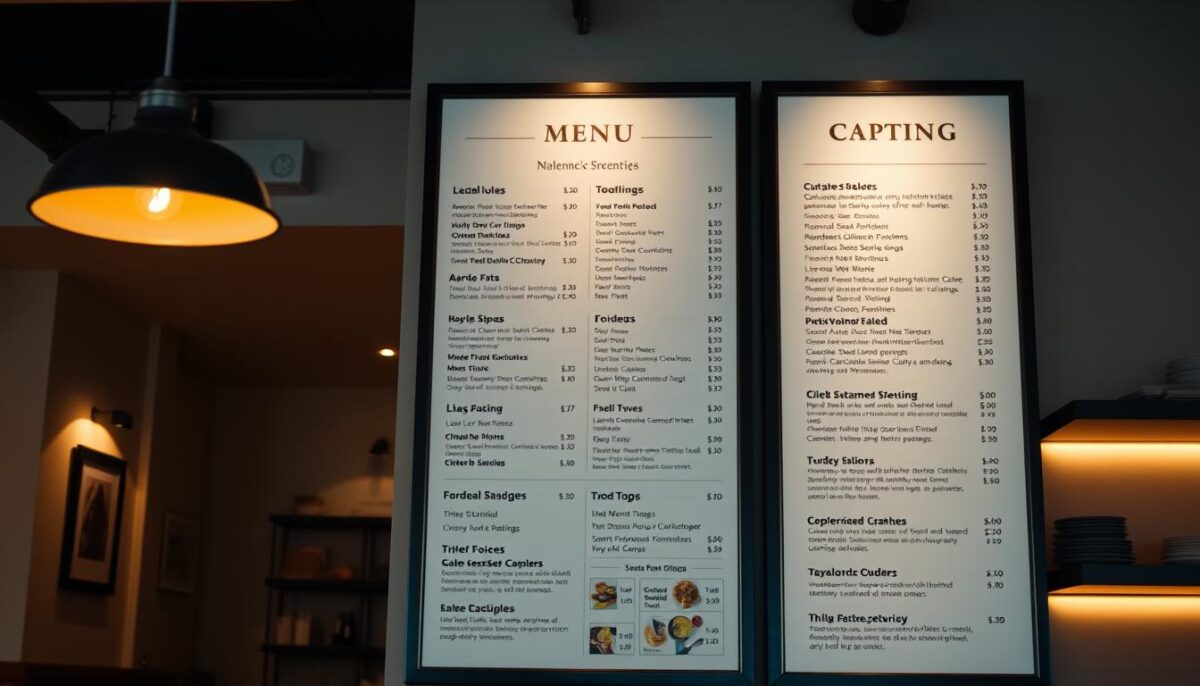
Creating Efficient Ordering Processes
Efficient ordering processes are vital in reducing actual wait times while maintaining the perception of popularity. By implementing transparent ordering systems, you can keep customers engaged and reduce perceived wait times for their meal. This can be achieved by providing regular updates on the status of their orders.
Special Items and Limited Availability Offerings
Limited availability items and special offerings can create buzz and drive demand for your restaurant. By creating a sense of urgency, you can encourage customers to join your wait line specifically to try these items. This strategy can also enhance the perceived value and desirability of your food offerings.
| Menu Design Element | Customer Perception | Impact on Popularity |
|---|---|---|
| Strategic menu layout | Enhanced perceived value | Increased demand |
| Mouth-watering descriptions | Increased appeal | More customers |
| Limited availability items | Created sense of urgency | Longer wait lines |
By understanding the psychology behind menu design and ordering systems, you can create a dining experience that not only attracts customers but also keeps them coming back. By enhancing the perceived value and quality of your food offerings, you can drive demand and increase customer satisfaction.
Conclusion: Balancing Popularity with Customer Satisfaction
Restaurant line psychology is more than just a tactic; it’s a strategy to enhance your customers’ overall experience. By understanding the psychology behind why customers are drawn to busy restaurants, you can transform your business. The key is to strike a balance between perceived popularity and actual customer satisfaction.
To achieve this balance, focus on creating comfortable waiting areas, managing customer expectations, and leveraging social media to showcase your restaurant’s buzz. Train your staff to understand and implement restaurant line psychology principles in their daily interactions with patrons. Monitor and adjust your approach to ensure that line psychology tactics are enhancing rather than detracting from the overall customer experience.
By implementing these strategies and continually assessing their impact, you can create a vibrant atmosphere that attracts more customers and keeps them coming back. Experiment with these techniques to find the right balance for your unique establishment and target customers.
FAQ
How can I make my customers feel comfortable while waiting in line?
To create a comfortable waiting experience, consider designing a waiting area with amenities like seating, entertainment, or complimentary refreshments. This can help distract customers from the wait time and make the experience more enjoyable.
What are some strategies for managing customer expectations while waiting in line?
To manage customer expectations, provide clear information about wait times and the ordering process. You can also consider implementing a queue management system or displaying signs that update customers on the status of their wait.
How can I create a sense of popularity and buzz around my establishment?
To create a sense of popularity, consider using social media to showcase a busy atmosphere, or implement reservation apps that allow customers to book a table in advance. You can also create a FOMO (Fear of Missing Out) effect by offering limited-time promotions or special deals.
What is the ideal way to design a menu that enhances perceived value?
To design a menu that enhances perceived value, consider using high-quality images and descriptive language to make dishes sound appealing. You can also use portion sizing and pricing strategies to create a sense of value for customers.
How can I optimize my ordering process to reduce wait times and improve customer satisfaction?
To optimize your ordering process, consider implementing an efficient ordering system, such as a digital menu or a streamlined ordering process at the counter or bar. This can help reduce wait times and improve customer satisfaction.
What are some ways to create a dynamic restaurant flow and keep customers engaged?
To create a dynamic restaurant flow, consider using seating strategies that create a sense of demand, such as seating customers at tables by the window or in high-traffic areas. You can also use table management techniques to keep customers moving through the dining area.
